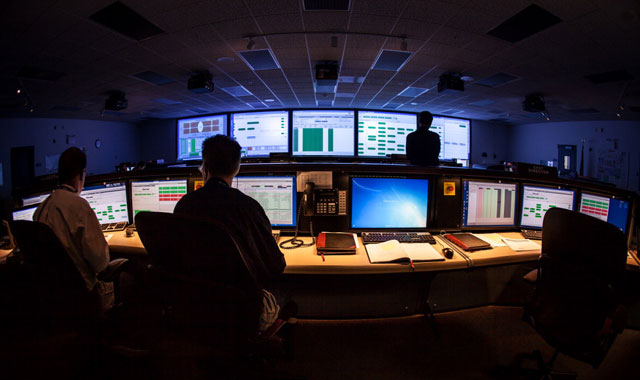Kim: What do we know about the kind of scientific work that's being shelved for the time being?
Standen: At a nuclear research lab it's always kin of hard to say because it is top secret. But certainly there is one project at Livermore that gets a lot of press, and that's the $4 billion National Ignition Facility, which we like to call NIF. And NIF is using the world's most powerful lasers to try and create nuclear fusion, which is one of there holy grails of science. But the attempts to achieve this are, of course, on hold as a result of the shutdown. But elsewhere around the country we're hearing from all kinds of federally funded scientists who described the difficulties of shutting down this kind of work. That includes astronauts who are training for space walks, and down to really mundane challenges like, if you're running experiments on a bunch of lab mice, what happens to those mice while you're gone? Who's going to feed them, and likely, are you going to have to euthanize all of them and start the experiment all over again once people get back to work?
Kim: Lawrence Livermore is one of four labs funded by the U.S. Department of Energy in the Bay Area. What are you hearing from folks at the three other labs?
Standen: The other nuclear research lab in the Bay Area - that's Sandia National Laboratories in Livermore - is also furloughing its workers officially starting next week, but they're basically going home this week. The other two DOE-funded labs here in the Bay Area are the SLAC National Accelerator Laboratory in Menlo Park. They're facing furlough, too. They're not giving a specific date on when that will happen. And finally, there's Lawrence Berkeley National Lab, and that's a place where scientists a working on climate change, on biofuels, alternative energy. I spoke to the lab director there yesterday, Paul Alivisatos, and he says that they too are looking at furloughs if the shutdown continues. I just wanted to add that what you hear from all of these labs and scientists in general is that it's a pain to stop doing all this work, but it's also incredibly expensive to take this kind of work, put it on hold and then restart it again later. Science happens on a time scale. You have to watch a scientific process unfold in order to study it, so basically you can't interrupt that without having to start from the very beginning with all the materials that entails.
Kim: Many of the 13,000 or so Bay Area lab employees are government contractors, so they're not eligible for back pay. Some local lawmakers are trying to change that. Are they making any progress?
Standen: Well, yes. On Sunday Representative Eric Swalwell, a Democrat from Pleasanton, hosted a town hall meeting in Livermore to talk to people about the impending cuts, along with some concerns that are more specific to workers at a government lab.
Eric Swalwell: Some of them are locked into non-compete clauses, so some of them can't even go out into the private sector to work.
Standen: Last Friday, Senator Dianne Feinstein, along with Swalwell and a number of other local representatives, sent a letter to the Department of Energy, and what they're asking for is that once the government starts up again, these workers will be eligible for back pay the same way other government workers might be. But I spoke with Swalwell's office today, and there's been no reply yet from the DOE.
Don Clyde and and Chad McClymonds contributed to this report.


